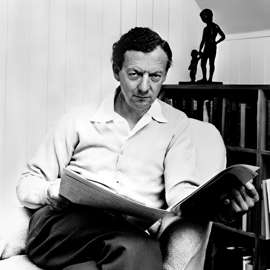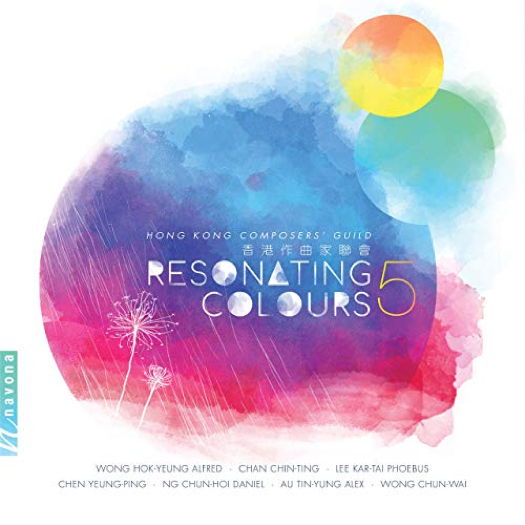 SPONSORED: Ensemble. Last Gasp of Boyhood. Roderic Dunnett investigates Jubilee Opera's A Time There Was for the Benjamin Britten centenary.
SPONSORED: Ensemble. Last Gasp of Boyhood. Roderic Dunnett investigates Jubilee Opera's A Time There Was for the Benjamin Britten centenary.
All sponsored features >>
- Lou Harrison
- Miloslav Kabeláč
- Otto Klemperer
- Albert Roussel
- Dmitri Hvorostovsky
- Edward Greenfield
- Adonis Lau
- HMS Pinafore
 DISCUSSION: John Dante Prevedini leads a discussion about Composers, individuals or collective?, including contributions from David Arditti, Halida Dinova, Robert McCarney and Jane Stanley.
DISCUSSION: John Dante Prevedini leads a discussion about Composers, individuals or collective?, including contributions from David Arditti, Halida Dinova, Robert McCarney and Jane Stanley.

Sound Pallette from Hong Kong
ONA JARMALAVIČIŪTĖ listens to
music by members of the
Hong Kong Composers' Guild
'The works all have different composers, different performers, were written at different times and stylistically suggest different states of mind.'
Color and sound have always been intertwined in our culture. You can find what color resonates with your soul or with the territory of Hong Kong, as well as in the case of chromesthesia you can automatically and involuntarily evoke an experience of color from the heard sounds. Scientifically, sound and light share the fundamental nature of vibration. There is a range of sound frequencies that have corresponding consonant colors, and even a formula or mapping invented, that translates between a pitch and a color, providing a sound-color link. This theme is again stressed in the Resonating Colours CD album series from the Hong Kong Composers' Guild (HKCG).
This is already the fifth time that HKCG is presenting such a musical project to the world. The four previous Resonating Colours CDs, which focused on chamber, piano and choral works of Hong Kong, were published in the years 2013-2014. HKCG was founded in 1983 as one of Hong Kong's cultural ambassadors, working with institutions and musicians with objectives to develop music as a vital creative form in Hong Kong.
Each album is a display of music from different guild members, showcasing virtuosity, creativity, and appreciation of innovative ideas in music. It is important to note that even though this CD has just been published, the pieces presented here by eight composers - Wong Hok-yeung Alfred, Chan Chin-ting, Lee Kar-tai Phoebus, Chen Yeung-ping, Ng Chun-hoi Daniel, Au Tin-yung Alex and Wong Chun-wai - were created during the period 1991 to 2017.
The opening piece, Night Poem (2001) by Wong Hok-yeung Alfred, was dedicated to pianist Mary Wu and cellist Wolfgang Nüßlein, who perform on this recording. The duet creates a chaotic, unsettling, yet poetic sound, reflecting restless thoughts which catch us up at night, in a rhapsodic style.
Chan Chin-ting is described as a Hong Kong-American composer fascinated by expression beyond words, which cannot be described but only imagined. His two compositions on this CD, Cross-Currents and Postcards, present different expressions and techniques of the solo violin. Cross-Currents is an exploration of the violin's full tonal range. According to the composer himself, the music reflects unstable, shifting, overlapping flows of water - currents that flow across other currents. This imagery is created through conflicting music materials and quick registral displacements of melody.
The structure of Postcards is strictly divided into six stand-alone musical miniatures, united with a common theme as a collection of musical postcards. Each of them depicts a scene or a personality - content expected from postcards.
Listen — Chan Chin-ting: Postcards
(track 3, 0:00-0:56) © 2019 Navona Records LLC :
Lee Kar-tai's Pyrus Flower in Rain is an expression of the composer's perception of the ink and wash paintings of Wu Guanzhong. This 'less-is-more'-based solo piano piece deals with the minimalist evocation of temporality. There is a great decisiveness behind every single note and its effect on the listener. The philosophy behind this piece deals with a transcendence of time and space from perpetual to artistic and conceptual.
Stretch of Light, a contrabass quintet by Chen Yeung-ping, is another exploration of musical space. The composer expresses his interest in the distance evoked by long, layered melodic lines. He used the 'Sonic Engraving' composing technique, which is related to instinctive and fragmented creation, and a rebuilding of J S Bach's Cello Suite No 1 in G major, BWV 1007.
Listen — Chen Yeung-ping: Stretch of Light
(track 5, 5:29-6:27) © 2019 Navona Records LLC :
Prelude II (Wuxing Interaction) by Ng Chun-hoi Daniel uses the unusual instrumentation of two guitars. The piece was inspired by ancient Chinese cosmology, depicting the interaction of Wuxing's five elements - wood (growth and vitality), expressed sonically by percussive sounds; fire (heat and energy), earth (well-being and completeness), that is low-pitched melodies and chords; metal (retrospection and transformation), as metallic string-produced sound; and water (enriching and conservation), as high pitched moving melodic materials. In one sense the elements help each others' development, and in others they conquer and overshadow each other. The materials are shared by the two guitarists, who pick the elements they start with and then change the energies to generated or overcoming each other. This produces a different figuration each time, so there is no strict score.
In Dyeing, a trio for violin, clarinet, and cello, composer Au Tin-yung takes inspiration from ancient Chinese philosopher Mozi, who was mesmerized by the process of coloring fabric and the completely new presence that the fabric can take. The same process has been adapted to music-making, picking the elements of sound carefully, knowing that everything will have an effect on the musical outcome and will paint it in a slightly different shade of color. The creation of musical images from the merged sounds of the violin, clarinet, and cello is explored, where the instruments' different timbres are handled in quite the same way as a craftsman would handle differently-textured fabrics.
Ng Chun-hoi's string quartet November Winds depicts the poetic imagery of seasonal changes. The piece was written between November and January, painting the composer's moods at that time. The motives of falling leaves and a melancholy - symbolized by a hidden quote from the Chinese melody Zhuang Tai Qiu Si - are presented as ephemeral, as the annual variances in weather and nature. Towards the end, the music gradually subsides into quiet solitude.
Listen — Ng Chun-hoi Daniel: November Winds
(track 8, 0:00-0:57) © 2019 Navona Records LLC :
The last piece presented here inspired the artistic design of this CD. Wong Chun-wai's Clouds in Twilight is an atmospheric meditation for orchestra, suggesting a dramatic ebb, broad melodic lines, and culminating full, rich orchestration. The piece shares musical influences from folk, western and film music. It was inspired by the sunset that the composer had experienced in Tamsui. The stillness of clouds and the scattering sunlight are at the same time not varying and yet ever-changing. The piece is a final symbol of nature embracing everything, and this is the final point of Resonating Colours 5.
Listen — Wong Chun-wai: Clouds in Twilight
(track 9, 10:50-11:50) © 2019 Navona Records LLC :
This recording presents a palette of music, with each piece bringing its own presence. The works all have different composers and different performers. They were written at different times, and stylistically they suggest different states of mind. But the 'resonator', as it were - Hong Kong Composers' Guild - has arranged the pieces next to each other on the CD, making them react to each other. Now the music becomes a dance, not only within the sounding of each composition, but also in the relationships between the compositions, as if examining not only the beauty of each raindrop but also the intricacies of the full stream of the river (which is nothing more than joint raindrops). All the colors in the pallette are dancing, shading, repeating and imitating each other and, therefore, creating drama, conflict and contrast. So each piece here takes on a role within the ensemble of pieces, thus creating the unique atmosphere of Resonating Colours 5.
Copyright © 19 August 2019
Ona Jarmalavičiūtė,
Vilnius, Lithuania

CD INFORMATION: HKCG - RESONATING COLOURS 5


